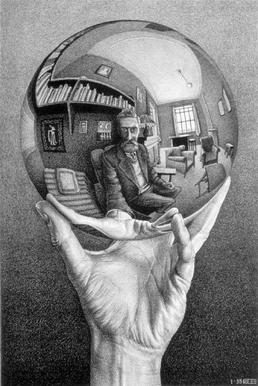While I see what you mean in terms of such a thing being of hardly any practical use and a waste of resources if by that we mean development-effort needed to make such a thing work divided by number of usecases, I think it’s quite the opposite.
Computational effort (renderer-work) is cheap, art direction effort (artist work) is expensive.
I always hear everyone talk a lot about the ability to iterate quickly and stuff.
Now the thing is, if I come back to the lemma bending the rays and bending the space is interchangeable, I have to admit, I have a lot more confidence in my ability to visualize in my head the former (rays bending) rather than the latter (space bending).
Hence I claim leaving the bending (be it of rays or space) to the computer/renderer would exactly be the more sensible approach, compared to trying to bend your imagination and picture (in your head) the end result and then work towards that in a top-down approach.
Take this example:


Hand with Reflecting Sphere - M.C. Escher || Hand with Reflecting Sphere, after Escher
I don’t mean to be condescending towards the guy who made the Blender-replica, but it goes without saying which one is easier done: The raytraced reflection or the drawn one.
And this is a case where Escher himself probably didn’t draw (no pun intended) from imagination alone, but rather used an actual mirror ball and his actual hand and actual room for reference.
Also note this example from Wikipedia:

Wormholes are traversable connections between two universes or between two distant regions of the same universe.
The wormhole shown here connects the place in front of the physical institutes of Tübingen university with the sand dunes near Boulogne sur Mer in the north of France.
The image is calculated with 4D raytracing in the Morris Thorne wormhole metric,
throat radius.
Though I currently have no actual intention to explore this in practice. Maybe if I should come across a renderer accessible to me which supports both OSL’s trace -function in full, importantly including the shade -parameter (Cycles doesn’t) as well as volume shaders (Appleseed doesn’t).
I suspect, given such complete OSL support, one might be able to hack something together to the effect of a volume shader which alters the ray direction at every bounce (in other words, the discretized, renderer-friendly approximation of a bent ray). Well, maybe. Very maybe.
greetings, Kologe